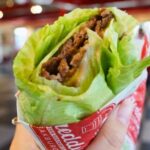At FOODS.EDU.VN, we understand your concerns about food safety, especially when it comes to mold. Can You Cook Mold Out Of Food? This article dives deep into the topic, exploring when it’s safe to salvage food and when it’s best to discard it, and provides insights on mold prevention. We offer practical advice and the latest insights, helping you make informed decisions and ensuring your food is both delicious and safe. Learn about different types of mold, mycotoxin risks, and effective food storage strategies.
1. Understanding Mold on Food
Mold is a microscopic fungus that thrives on organic matter, water, and oxygen. It’s a common spoiler of food, but not all mold is created equal. While some types of mold are used intentionally in food production, like in certain cheeses, others can be harmful and pose significant health risks. Understanding the different types of mold, how they grow, and the factors that influence their growth is crucial for making informed decisions about food safety.
1.1 What Exactly is Mold?
Mold is a type of fungus, similar to mushrooms, with thousands of different species. These microscopic organisms are everywhere, and their spores travel through the air, waiting for the right conditions to grow.
- Microscopic Nature: Mold is not visible to the naked eye until it forms colonies.
- Ubiquitous Presence: Mold spores are present in the air, both indoors and outdoors.
- Growth Conditions: Mold needs organic material (food), moisture, and oxygen to grow.
- Reproduction: Molds reproduce by releasing spores, which spread and create new colonies.
- Versatile: It can grow on virtually any type of food.
- Allergens: Certain molds may trigger allergic reactions.
- Mycotoxins: It can produce dangerous mycotoxins, poisonous substances that lead to illness or even fatalities.
- Beneficial: It can play an important role in food production, such as in the fermentation of certain cheeses like blue cheese.
1.2 How Mold Grows on Food
Mold grows by releasing spores that land on food. When these spores find the right conditions—nutrients, moisture, and oxygen—they germinate and begin to grow, forming visible patches of mold.
- Spore Dispersal: Tiny mold spores are carried in the air and settle on food surfaces.
- Germination: When spores land on a suitable surface (food), they germinate and grow.
- Mycelial Growth: The mold develops hyphae (thread-like filaments) that penetrate the food.
- Visible Colonies: Over time, these hyphae form visible colonies, known as mold.
- Spore Release: Mature colonies produce new spores, spreading the mold to other areas.
1.3 Factors Influencing Mold Growth
Several factors influence how quickly mold grows on food. These include the type of mold, the type of food, and environmental conditions such as temperature and humidity.
- Type of Mold: Different species of mold grow at varying rates.
- Type of Food: Foods with high moisture content are more prone to mold growth.
- Temperature: Warmer temperatures generally promote faster mold growth.
- Humidity: High humidity levels provide the moisture needed for mold to thrive.
- Acidity: Low-acid foods tend to support more mold growth.
- Oxygen: Mold requires oxygen to grow, so airtight packaging can help prevent its growth.
- Preservatives: Foods with preservatives are less likely to develop mold.
1.4 How Long Does It Take for Mold to Grow on Food?
The time it takes for mold to grow on food can vary significantly depending on several factors. In warm, humid conditions, mold can develop on fruit in just a few days. In cooler environments, like inside a refrigerator, it might take several weeks.
- Warm Temperatures: Mold grows faster in warmer temperatures.
- High Humidity: High humidity levels accelerate mold growth.
- Food Type: Moist foods are more susceptible to rapid mold growth.
- Storage Conditions: Proper storage can slow down mold growth.
- Mold Species: Some molds grow faster than others.
2. Red Flag Foods: When to Always Discard
Certain foods are more susceptible to mold contamination due to their high moisture content and soft texture. These “red flag” foods should always be discarded if mold is present, as the mold can penetrate deep into the food, making it unsafe to consume.
2.1 Identifying High-Risk Foods
High-risk foods include luncheon meats, cooked leftovers, soft fruits, and porous items like bread and nuts. These foods provide an ideal environment for mold to grow and produce harmful toxins.
- Luncheon Meats: Hot dogs, bacon, and other processed meats.
- Cooked Leftovers: Meat, poultry, and fish.
- Cooked Grains: Pasta, rice, and other cooked grains.
- Casseroles: Prepared dishes with multiple ingredients.
- Dairy Products: Sour cream and yogurt.
- Soft Fruits: Tomatoes, berries, and cucumbers.
- Nuts and Legumes: Due to their porous nature, mold can easily penetrate.
- Bread and Baked Goods: Highly porous items that can quickly absorb mold spores.
2.2 Why These Foods Are High-Risk
These foods are high-risk because their moisture content and texture allow mold to easily penetrate beneath the surface. Additionally, these conditions can also support the growth of dangerous bacteria.
- High Moisture Content: Allows mold to easily spread throughout the food.
- Soft Texture: Provides less resistance for mold to penetrate.
- Bacterial Growth: Ideal conditions for bacteria to grow alongside mold.
- Toxin Production: Mold can produce harmful mycotoxins that are dangerous to ingest.
- Invisible Contamination: Mold can spread beyond what is visible on the surface.
2.3 Safe Handling and Disposal
When dealing with moldy red flag foods, it’s crucial to handle them carefully to prevent the spread of spores. Wrap the spoiled items in plastic, discard them in a sealed container, and inspect nearby foods for signs of contamination.
- Avoid Sniffing: Do not sniff moldy food to avoid inhaling spores.
- Wrap in Plastic: Wrap the moldy food tightly in plastic to contain spores.
- Seal and Discard: Dispose of the wrapped food in a sealed container outside your home.
- Inspect Nearby Foods: Check other foods stored nearby for any signs of mold.
- Clean Contaminated Areas: Clean the area where the moldy food was stored with a disinfectant.
- Wash Hands Thoroughly: Wash your hands thoroughly after handling moldy food.
3. Cheeses Made With Mold: What’s Safe and What’s Not
Certain cheeses, like blue cheese, Brie, and Camembert, are intentionally made with mold as part of their production. However, it’s essential to differentiate between these safe, intentional molds and other, potentially harmful molds.
3.1 Identifying Safe Molds in Cheese
Safe molds in cheese production include Penicillium roqueforti (used in blue cheese, Roquefort, and Stilton) and Penicillium camemberti (used in Brie and Camembert). These molds are carefully cultivated and safe for consumption.
| Cheese Type | Mold Used in Production |
|---|---|
| Blue Cheese | Penicillium roqueforti |
| Brie | Penicillium camemberti |
| Roquefort | Penicillium roqueforti |
| Gorgonzola | Penicillium glaucum |
| Stilton | Penicillium roqueforti |
| Camembert | Penicillium camemberti |
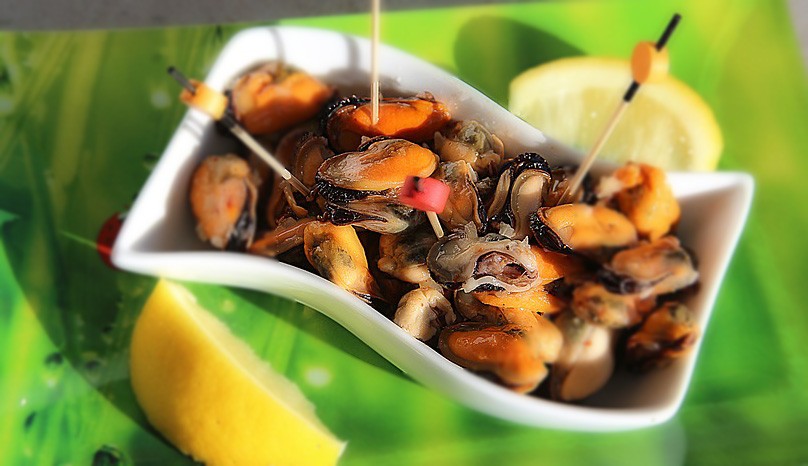
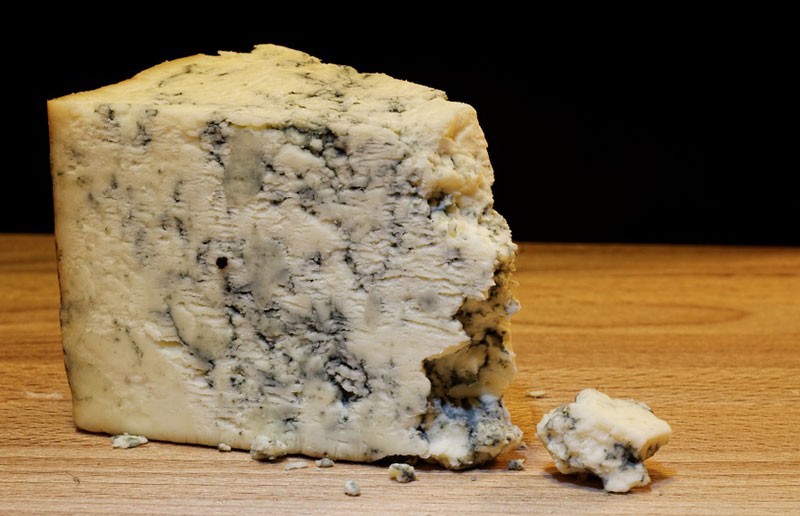
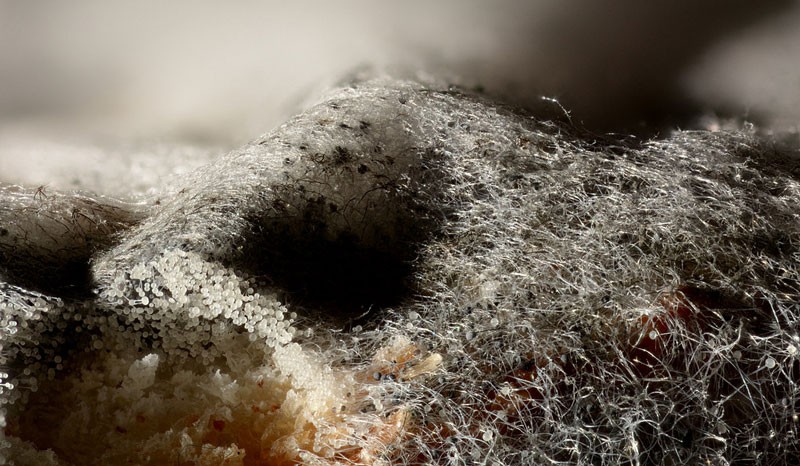
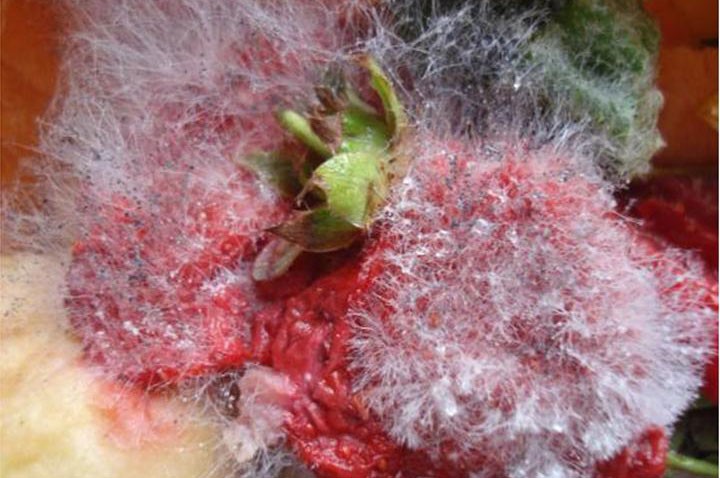
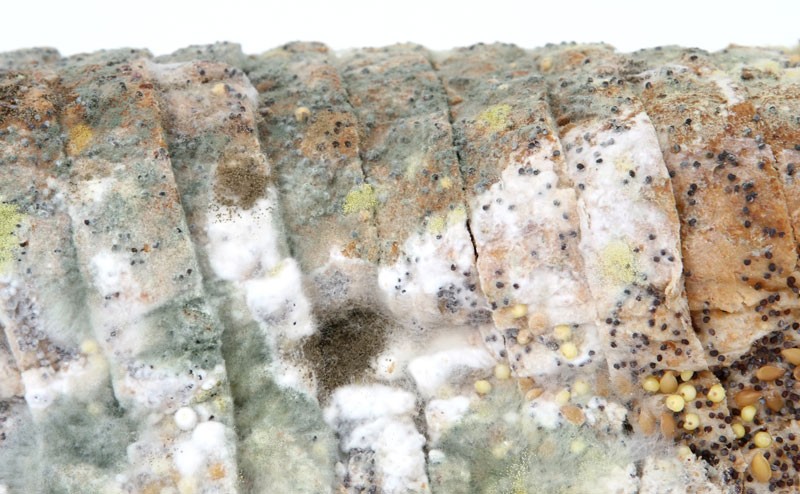
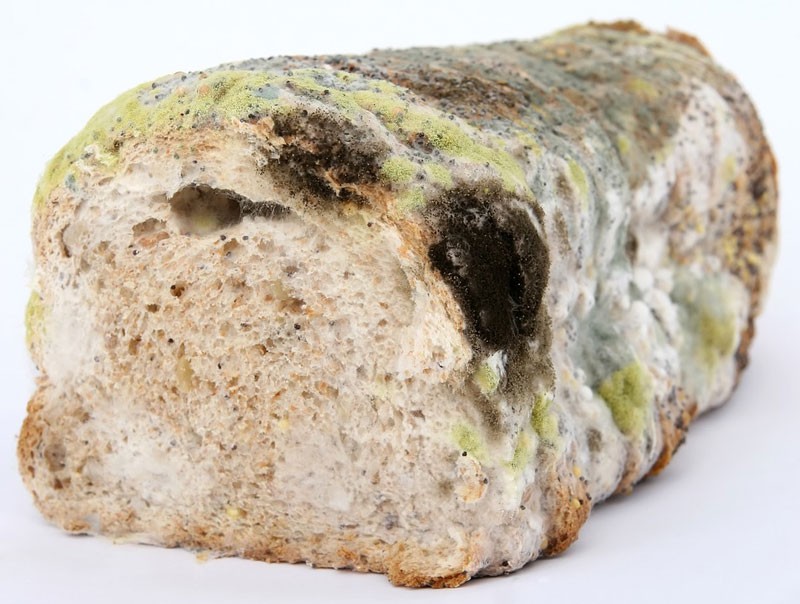
3.2 Differentiating Between Safe and Harmful Molds
It’s crucial to distinguish between the intentional molds used in cheese production and other molds that may appear. If you notice any mold on these cheeses that is not part of the manufacturing process, it’s best to discard the cheese.
- Intentional Molds: These are part of the cheese-making process and safe to eat.
- Unintentional Molds: Any other mold growth is potentially harmful.
- Color and Texture: Look for changes in color or texture that indicate unwanted mold.
- Smell: An unusual or foul odor can indicate harmful mold growth.
- When in Doubt: Always err on the side of caution and discard if unsure.
3.3 Safe Consumption Practices
When consuming cheeses made with mold, ensure that the mold is part of the cheese’s normal appearance and texture. Store these cheeses properly, wrapped in cellophane, to prevent cross-contamination.
- Visual Inspection: Ensure the mold is consistent with the cheese type.
- Proper Storage: Keep cheese wrapped in cellophane to prevent cross-contamination.
- Avoid Surface Growth: Be wary of mold growing on the surface, as it may produce harmful toxins.
- Cut Away Contamination: If you find mold on the surface, cut away at least 1 inch around the affected area (for hard cheeses).
- When to Discard: If unsure about the mold’s safety, discard the cheese.
4. Yellow Flag Foods: When You Can Cut Away the Mold
Harder and drier foods, like hard cheese, firm fruits and vegetables, and dry-cured ham, can sometimes be salvaged by carefully cutting away the mold. However, it’s essential to remove enough of the surrounding area to ensure you’re eliminating all mold spores.
4.1 Identifying Foods That Can Be Salvaged
Foods that can sometimes be salvaged include hard cheese, firm fruits and vegetables (like cabbage, carrots, and bell peppers), and hard salami. These foods have a lower moisture content, making it harder for mold to penetrate deeply.
- Hard Cheese: Varieties like cheddar, Parmesan, and Swiss.
- Firm Fruits and Vegetables: Cabbage, carrots, bell peppers, and apples.
- Hard Salami and Dry-Cured Ham: These have low moisture content.
- Dense Foods: Generally, foods that are not porous and have a firm texture.
4.2 How to Safely Remove Mold
To safely remove mold, cut at least 1 inch (2.5 cm) around and below any visible surface mold. Be careful not to touch the mold with the knife to avoid contaminating the rest of the food.
- Use a Clean Knife: Start with a clean knife to avoid spreading mold spores.
- Cut Generously: Remove at least 1 inch (2.5 cm) around and below the visible mold.
- Avoid Contamination: Don’t let the knife touch the mold as you cut.
- Re-wrap Tightly: Wrap the remaining food tightly to prevent further contamination.
- Inspect Regularly: Check the remaining food regularly for new mold growth.
4.3 Precautions and Best Practices
Remember that there is often more mold present than what you can see. Always err on the side of caution and discard the food if you are unsure about the extent of the contamination.
- Mold Penetration: Mold can penetrate deeper than what is visible on the surface.
- Hidden Spores: Spores can be present even if there’s no visible mold.
- High-Risk Individuals: Pregnant women, children, and individuals with compromised immune systems should avoid eating salvaged foods.
- When in Doubt: Always discard the food if you are unsure about its safety.
5. Types of Mold on Food and Their Potential Impacts
There are numerous types of mold that can grow on food, each with its own characteristics and potential health risks. Recognizing these different types is essential for determining the best course of action.
5.1 Common Mold Types
Common mold types include black mold, pink mold, white mold, green mold, orange mold, red mold, and blue mold. Each type has distinct characteristics and is often found on different types of food.
| Mold Color | Common Foods Affected | Action Recommended | Potential Health Risks |
|---|---|---|---|
| Black | Bread, fruits, refrigerator seals | Discard immediately | Respiratory issues, allergies |
| Pink | Bread, dairy products, meat | Discard immediately | Respiratory, gastro-intestinal infections |
| White | Berries, cheeses, fruits | Check if intentional or discard | Allergies, mycotoxin production |
| Green | Citrus fruits, bread, salads | Discard immediately | Respiratory problems, vomiting |
| Orange | Wood, some fruits | Discard and clean area | Respiratory problems |
| Red | Various foods | Treat with caution and discard if unsure | Potential mycotoxin production |
| Blue | Bread, cheeses | Check if intentional or discard | Mycotoxin production if exposed to air |
5.2 Health Risks Associated with Different Molds
The health risks associated with mold consumption range from allergic reactions to more severe conditions like respiratory problems and mycotoxin poisoning.
- Allergic Reactions: Sneezing, runny nose, coughing, and skin irritation.
- Respiratory Problems: Wheezing, shortness of breath, and asthma exacerbation.
- Gastrointestinal Issues: Nausea, vomiting, and diarrhea.
- Mycotoxin Poisoning: Reduced appetite, malaise, and in severe cases, death.
5.3 Detailed Look at Each Mold Type
Let’s take a closer look at each type of mold, including their common characteristics and specific health risks.
5.3.1 Black Mold on Food
Black mold can appear in various strains, some of which are toxic. It is commonly found on bread, fruits, and refrigerator seals.
- Appearance: Black or dark-colored spots.
- Common Foods: Bread, fruits, vegetables, and refrigerator seals.
- Health Risks: Respiratory issues, allergies, and potential mycotoxin production.
- Action: Discard immediately and clean the affected area.
5.3.2 Pink Mold on Food
Pink mold may not be mold at all, but rather bacteria growing. It is often seen on bread, dairy products, and meat.
- Appearance: Pinkish or slimy formations.
- Common Foods: Bread, dairy products, and meat.
- Health Risks: Respiratory, gastro-intestinal, and urinary tract infections.
- Action: Discard immediately.
5.3.3 White Mold on Food
White mold can appear on various foods, from cheeses to fruits. It’s crucial to determine if it’s an intentional mold or a harmful contaminant.
- Appearance: Fluffy, white growth.
- Common Foods: Cheeses (like Brie and Camembert), berries, and other fruits.
- Health Risks: Allergies and mycotoxin production.
- Action: Check if intentional; if not, discard.
5.3.4 Green Mold on Food
Green mold is commonly found on citrus fruits and bread. It can be particularly irritating, especially for people with mold allergies.
- Appearance: Green, fuzzy growth.
- Common Foods: Citrus fruits and bread.
- Health Risks: Respiratory problems, vomiting, and mycotoxin production.
- Action: Discard immediately.
5.3.5 Orange Mold on Food
Orange mold often has a slimy texture and can be found on wood and some fruits. It may also indicate the presence of bacteria.
- Appearance: Slimy, orange growth.
- Common Foods: Wood and some fruits.
- Health Risks: Respiratory problems and potential bacterial infections.
- Action: Discard and clean the area thoroughly.
5.3.6 Red Mold on Food
Red mold is often Neurospora, but it’s best to treat it with caution as some mycotoxin-producing molds may also appear red.
- Appearance: Reddish growth.
- Common Foods: Various foods.
- Health Risks: Potential mycotoxin production.
- Action: Treat with caution and discard if unsure.
5.3.7 Blue Mold on Food
Blue mold can be a strain of Penicillium, which is used in blue cheese production. However, other blue molds can be harmful.
- Appearance: Blue or bluish-green growth.
- Common Foods: Bread and cheeses.
- Health Risks: Mycotoxin production if exposed to air.
- Action: Check if intentional; if not, discard.
6. The Dangers of Eating Mold
Eating mold can pose several health risks, ranging from allergic reactions to more severe conditions like mycotoxin poisoning. Understanding these dangers is crucial for making informed decisions about food safety.
6.1 Health Symptoms From Eating Moldy Food
Symptoms of an allergic reaction to mold can include sneezing, runny or stuffy nose, coughing, irritated eyes, and dry, scaly skin. Those with asthma may experience more severe symptoms.
- Allergic Reactions: Sneezing, runny nose, coughing, postnasal drip, irritated eyes, nose, and throat, and dry, scaly skin.
- Respiratory Problems: Wheezing, sneezing, chest tightness, and difficulty breathing.
- Mycotoxin Poisoning: Reduced appetite, malaise, acute illness, and in rare cases, death.
6.2 Is It Dangerous to Inhale Mold Spores?
Inhaling mold spores can also be risky, potentially causing allergic reactions or respiratory problems. It’s best to avoid sniffing moldy food.
- Allergic Reactions: Can trigger allergic symptoms like sneezing, runny nose, and coughing.
- Respiratory Irritation: May cause irritation in the respiratory tract.
- Asthma Exacerbation: Can worsen asthma symptoms.
6.3 Mold on Food Can Make You Sick
Mold on food can cause irritation in the respiratory, gastro-intestinal, or urinary tracts, even if you don’t have allergies. Mycotoxins produced by some molds are poisonous carcinogens that can be fatal.
- Respiratory Problems: Wheezing, sneezing, chest tightness, and difficulty breathing.
- Gastrointestinal Issues: Nausea, vomiting, and diarrhea.
- Mycotoxin Poisoning: Reduced appetite, malaise, acute illness, and in rare cases, death.
7. Can Cooking Kill Mold and Make Food Safe?
While cooking can kill mold, it may not eliminate the toxins they produce. Let’s explore the effects of heat on mold and the safety of consuming cooked moldy food.
7.1. Does Heat Kill Mold Spores?
Yes, heat can kill mold spores. Most molds are killed off by temperatures of 140-160°F (60-70°C). Boiling water is generally enough to kill off mold. However, heat must penetrate the food to kill the mold, and mycotoxins can survive intense heat.
7.2. Can You Kill Mold by Cooking It?
Cooking can disrupt the viability of mold, making it unable to grow or spread. However, not all molds are killed by heat, and any remnants of the moldy food should be cleaned to prevent future growth. It’s important to note that heat can eliminate microscopic fungi, but the mycotoxins they produce might still be present.
7.3. Does Boiling Water Kill Mold?
Yes, boiling water kills most molds, but the mycotoxins they produce might still be present. It’s always advisable to discard foods with visible mold growth to ensure safety.
7.4. Response of Mold to Heat Treatment Methods
Common heat treatment methods and their impact on mold and mycotoxins:
| Treatment Method | Effect on Mold | Effect on Mycotoxins | Commonly Used For |
|---|---|---|---|
| Boiling Water | Kills most molds | May not neutralize | Sterilizing utensils, cooking pasta |
| Toasting | Kills mold on surface | May not neutralize | Bread, bagels |
| Baking | Kills most molds | May not neutralize | Pastries, bread |
| Cooking Cheese | Kills mold and bacteria | May not neutralize | Soft and hard cheeses |
7.5. Will Cooking Moldy Cheese Kill Bacteria?
Yes, cooking moldy cheese can kill the mold and bacteria, but it doesn’t neutralize the toxins they’ve produced. Soft cheeses are particularly susceptible to mold growth, so it’s best to discard them. Hard cheeses can sometimes be salvaged by cutting away the moldy part, but always exercise caution.
7.6. Does Heat Kill Mold on Bread?
Yes, toasting bread can kill mold. However, while toasting eliminates the mold, it doesn’t neutralize the toxins already produced. Therefore, it’s safer to discard moldy bread entirely to avoid any health risks.
8. Preventing Mold Growth on Food
Preventing mold growth is better than throwing out moldy food. Here are steps you can take to keep your food fresh and mold-free:
8.1. Key Strategies for Mold Prevention
- Examine Food Before Buying: Check for bruising, softness, oxidation, or signs of mold.
- Buy Pre-Packed Food Cautiously: Ensure you check the date and choose the most recently packed items.
- Rinse and Store Canned Goods: Rinse the contents under water and store them in airtight containers.
- Consume Early: Eat food before mold has time to take hold.
- Keep Food Cold: Refrigerate food, especially soft moist food like fruit, rather than at room temperature.
- Use Heat to Kill Mold: Preserve high-acid foods through heat treatment.
- Keep Kitchen Clean: Clean your refrigerator and other kitchen surfaces regularly.
- Maintain Clean Kitchen Tools: Keep dishcloths, tea towels, sponges, and mops clean.
8.2. Food Storage Recommendations
Proper storage is key to preventing mold growth. Here’s a guide on how to store various food items:
| Food Type | Storage Recommendation | Mold Prevention Tips | Shelf Life |
|---|---|---|---|
| Soft Cheese | Refrigerate, consume quickly | Keep in airtight containers | 1-2 weeks |
| Hard Cheese | Refrigerate, can cut off mold | Store in wax paper or cheese paper | 3-6 weeks |
| Bread | Cool, dry place | Consume quickly, avoid damp storage | 4-7 days |
| Fruits (berries) | Refrigerate | Check regularly, discard moldy pieces | 3-7 days |
| Fruits (citrus) | Cool place or refrigerate | Check regularly | 1-2 weeks |
| Cooked Meat | Refrigerate | Consume within 3-4 days | 3-4 days |
8.3. Mold-Proofing Kitchen and Cleaning Tips
Keeping your kitchen clean and well-aired will also have a big impact on your food’s life. Here are a few tips that can help you prevent mold in the kitchen:
- Clean Refrigerator Regularly: Clean every few months with baking soda dissolved in water.
- Check Food Freshness: Toss away anything that has a sign of mold or rotting.
- Replace Sponges Regularly: Replace sponges at least once a week and use clean dish clothes and towels.
- Wash Dishes Daily: Don’t leave food leftovers in your sink.
- Clean Dishwasher and Garbage Disposals: Pour baking soda, salt, and vinegar down the sink.
- Wash Kitchen Tools: Wash and dry wooden tools well before setting aside.
- Store Unused Appliances Properly: Ensure they are well-dried before storing and, if possible, keep them open.
- Control Humidity: Keep the relative humidity in your home between 30% and 50%.
8.4. Additional Recommendations
- Consume Processed Food Promptly: Eat before the expiration date.
- Refrigerate Animal Matter: Store properly to minimize mold growth.
- Clean Kitchen Utensils: Regularly clean to prevent mold.
By following these guidelines, you can minimize the risk of mold growth on your food and ensure a safer, healthier kitchen environment.
9. FAQs: Addressing Common Questions About Mold on Food
Here are some frequently asked questions about mold on food to further clarify common concerns:
-
Is it always dangerous to eat moldy food?
- Yes, it’s generally not safe to eat moldy food. Some molds can produce harmful mycotoxins that can cause allergic reactions, respiratory problems, or even mycotoxin poisoning.
-
Can you get sick from inhaling mold spores from food?
- Yes, inhaling mold spores can be risky, potentially causing allergic reactions or respiratory problems. It’s best to avoid sniffing moldy food.
-
What should you do if you accidentally eat moldy food?
- If you accidentally eat moldy food, monitor yourself for any symptoms such as nausea, vomiting, or allergic reactions. Contact a healthcare professional if symptoms are severe or persist.
-
Does freezing food kill mold?
- Freezing can slow down mold growth but does not kill mold. Mold can become active again once the food is thawed.
-
Is it safe to eat fruits with mold on a peel you discard?
- For fruits with a tough peel like pineapple, you can carefully cut away the affected area. Fruits with softer peels like oranges or bananas should be discarded entirely.
-
Which foods are most likely to grow mold?
- Foods with high moisture content, like soft fruits, bread, and cheese, are most likely to grow mold.
-
How can you tell if mold is safe or dangerous on cheese?
- Safe molds are intentionally used in cheese production, such as Penicillium roqueforti in blue cheese. Any other mold growth should be treated as potentially harmful and discarded.
-
How often should you clean your refrigerator to prevent mold?
- It’s recommended to clean your refrigerator every few months with a solution of baking soda and water to prevent mold growth.
-
What is the best way to store bread to prevent mold?
- Store bread in a cool, dry place, and consume it quickly. Avoid storing it in damp conditions.
-
Are there any foods that are safe to eat even if they have a little mold?
- Hard cheeses and firm fruits/vegetables can sometimes be salvaged by carefully cutting away the mold, ensuring you remove at least 1 inch around and below the affected area.
Conclusion
While some molds are harmless and intentionally used in food production, most molds on food should be treated with caution. It’s essential to know when to discard food and when it’s possible to salvage it. By understanding the different types of mold, their potential health risks, and the best practices for food storage and handling, you can protect yourself and your family from the dangers of moldy food.
Remember to always prioritize food safety and when in doubt, throw it out.
For more in-depth information and expert advice on food safety and handling, visit FOODS.EDU.VN.
Ready to dive deeper into the world of culinary expertise? Visit FOODS.EDU.VN today for a treasure trove of recipes, cooking tips, and expert advice.
Interested in learning more? Contact us at:
- Address: 1946 Campus Dr, Hyde Park, NY 12538, United States
- WhatsApp: +1 845-452-9600
- Website: foods.edu.vn
